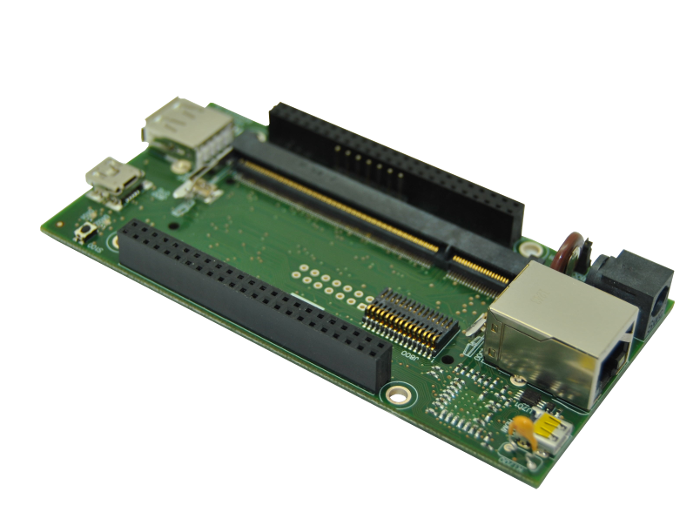What can I do with IGEP AQUILA EXPANSION
From IGEP - ISEE Wiki
| |
This is a work in progress article. Help other developers like you in the IGEP Community by improving it! |
|
|
Overview
This is the 2/3 chapter of the Getting Started with IGEP AQUILA EXPANSION Tutorial Guide.
In this second chapter, we will learn some basics tasks. Upon completion, you will be ready to continue with chapter 3/3 that explains more advanced tasks.
Contents
What can I do
You must logged in the board.
Remote connection via Ethernet

|
If you aren't using a Linux operating system, use IGEP SDK Virtual Machine to connect to the board |
In your Host Machine, open a terminal sessions set up an Ethernet alias for your network interface,
$ sudo ifconfig eth0:0 192.168.5.10
Connect to the board using the SSH protocol
$ ssh root@192.168.5.1
An empty password for root user should work to access to the shell prompt.
How to use audio HDMI
IGEP COM AQUILA contains multiple I2S peripherals one of them is connected to HDMI transceiver. Then you can easily play a *.wav sound with the application Aplay, for example:
aplay /opt/wav/test.wav
How to use LEDs
The board has three user leds available that can be controlled. In its simplest form, you can control of LEDs from userspace. LEDs appear in /sys/class/leds/ and you can turn on and off with following commands:
A detailed guide on how use GPIO-LEDS can be found by following this link: How to handle the gpio-LED
Control AQUILA COM Green LED
echo "1" > /sys/class/leds/com\:green\:user/brightness
You can turn them down using the same command and write '0' instead of '1'.
Control AQUILA EXPANSION Bicolor LED
echo "1" > /sys/class/leds/base\:green\:user/brightness echo "1" > /sys/class/leds/base\:red\:user/brightness
You can turn them down using the same command and write '0' instead of '1'.
How to use EEPROM
IGEP AQUILA EXPANSION contains a 32 Kb EEPROM. EEPROM can be read and write via /sys/devices/ocp.2/44e0b000.i2c/i2c-0/0-0050/eeprom:
- Write EEPROM:
echo "data" > /sys/devices/ocp.2/44e0b000.i2c/i2c-0/0-0050/eeprom
- Read EEPROM:
cat /sys/devices/ocp.2/44e0b000.i2c/i2c-0/0-0050/eeprom
How to use USB OTG
The base can be powered though USB OTG connector. It's recomended use an external USB hub. Connect the USB Standard-A to Mini-B type cable between the base and the USB hub.
under construction
You have successfully completed this chapter of the guide.
|

|
If you have any question, don't ask to ask at the IGEP Community Forum or the IGEP Community Chat | 
|



